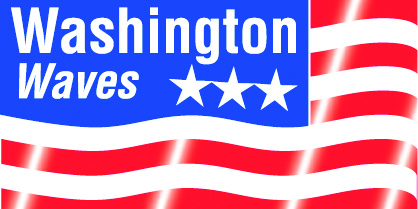Update: President Trump announced January 25 that he had agreed to reopen the government for three weeks, until February 15, giving Congress and the administration time to work out a deal on border security.
Our original story, which went to press January 24, is below.
Washington, D.C.—A partial government shutdown entered its second month, and a signal for a quick resolution to the longest funding lapse in U.S. history remained missing.
Two competing measures to end the stalemate—one from the Republicans and the other from the Democrats—were scheduled for a floor vote in the U.S. Senate January 24.
Neither was expected to garner 60 votes, the supermajority needed to advance under that chamber’s rules.
On the other side of the Capitol, House Speaker Nancy Pelosi (D-Calif.) exchanged letters with President Donald Trump that amounted to a form of one-upmanship over whether the president on Tuesday would deliver his State of the Union address from the House chamber, the traditional location for the event that draws members of Congress, Supreme Court justices, top military leaders, all but one Cabinet member and other dignitaries.
Trump eventually agreed the address will wait until after the shutdown ends.
Meanwhile, the consequences of the shutdown continue to be felt by roughly 800,000 federal employees whose agencies have been closed for lack of funds.
Many missed a second paycheck by the end of the week.
Commandant Comments
Admiral Karl Schultz, commandant of the U.S. Coast Guard, described as unacceptable Coast Guard members having to rely on food pantries and donations to get through day-to-day life because of the weeks-long partial government shutdown.
“You, as members of the Armed Services, should not be expected to shoulder this burden,” Schultz said in a video posted to Twitter.
He appeared in the video with Master Chief Petty Officer Jason Vanderhaden, who also heaped praise on the leadership displayed by members of the Coast Guard.
Schultz vowed to take a message to members of Congress about the importance of putting checks in the hands of those who serve in the world’s best Coast Guard.
“In closing, continue to stand tall,” he said.
“Your dedication and resilience in this adversity reflect the absolute best of our nation.”
As a part of the U.S. Department of Homeland Security, which has been shuttered because of the funding lapse, members of the Coast Guard belong to that group of government employees directly impacted by the shutdown.
Shutdown Effects On Ports
American Association of Port Authorities President and CEO Kurt Nagle said anecdotal examples from just a few AAPA member ports illustrate the impacts the partial government shutdown are having on the ability of U.S. ports to operate effectively and continue growing as cargo volumes increase.
“Ports are hubs for trillions of dollars annually in international trade and cruise traffic, the activities of which support tens of millions of American jobs,” Nagle said in a written statement.
“A government shutdown, even a partial one, complicates the ability of ports to handle the nation’s imports and exports, maintain and generate new business opportunities for their communities, and ensure the jobs that ports support aren’t jeopardized.”
Examples he cited range from difficulties in applying for reimbursement for expenses linked to federal grants, permitting and regulatory delays on undertaking needed maintenance and repair projects, and inability of tug companies to bring on new hires because no one is available to issue requisite mariner credentials.
AAPA urges the administration and Congress to quickly reopen the entire federal government and resolve the issues that led to its partial closure, Nagle said.
WRDA Implementation
The National Waterways Conference (NWC) formally asked the U.S. Army Corps of Engineers for additional opportunities to provide input on the development of implementation guidance for Water Resources Development Act (WRDA) of 2018 beyond the written comments sought in a December press release.
Specifically, the NWC is asking for public meetings for face-to-face discussions, and a reasonable extension of the 60-day public comment period, which currently ends February 12.
In a news alert issued soon after the December press release, NWC expressed concerns the process created by the Corps fell far short of what was called for in WRDA 2018 and expressed those comments again in a letter to Assistant Secretary of the Army for Civil Works R.D. James.
Sent by NWC President Amy Larson, the NWC letter singled out provisions in WRDA 2018 providing for non-federal stakeholders to “engage” with the Corps on the development of guidance and allow the Corps “to reach out to non-federal stakeholders and circulate drafts of implantation guidance” for input and recommendations.
“These two provisions, for which NWC strongly advocated, clearly contemplate a more interactive process,” the letter to James states.
The Corps did not respond immediately.
Infrastructure Meeting
In yet another sign the Trump administration remains hopeful for an infrastructure package, a White House meeting on that topic was held recently with several key players.
“President Trump remains committed to rebuilding the country’s infrastructure,” an aide said, confirming the meeting took place.
White House economic adviser Larry Kudlow led the session.
A trillion-dollar infrastructure package was a major campaign issue for the president during his campaign in 2016, but that effort never got past the vision stage in his first two years in office.
A major sticking point remains how to fund such a huge program.
Still, both Republicans and Democrats in Congress hope such an effort can be used to bridge the partisan gap that clearly has been exacerbated by the partial government shutdown.




